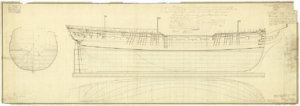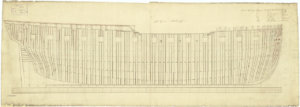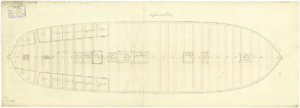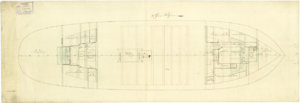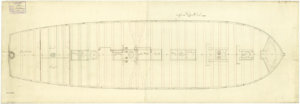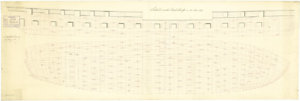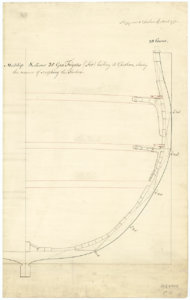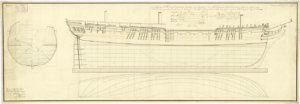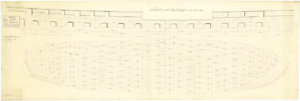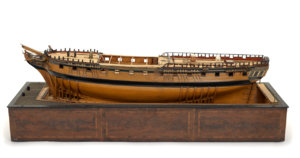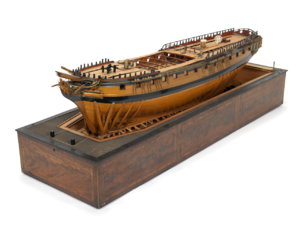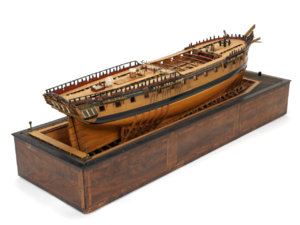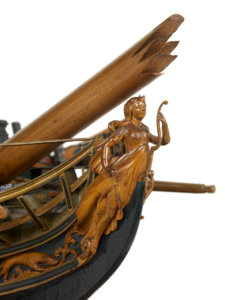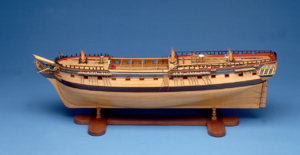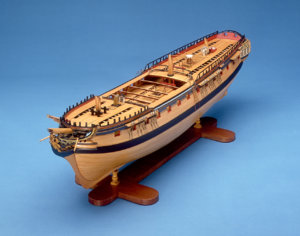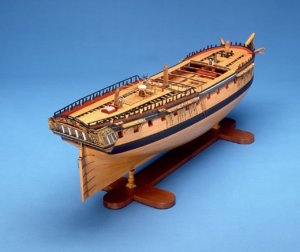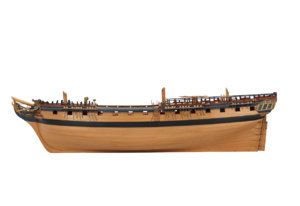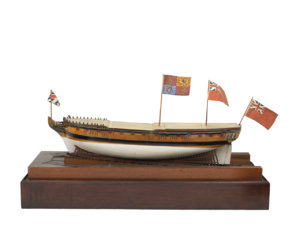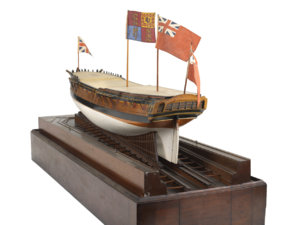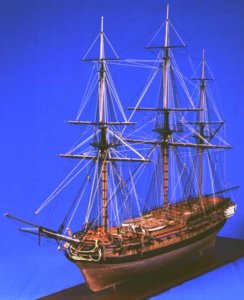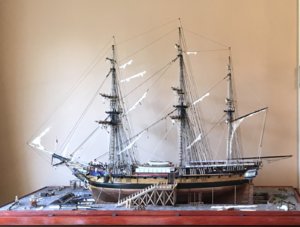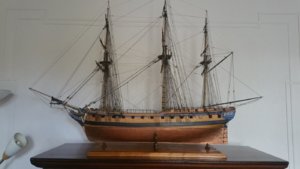The Artois class were a series of nine frigates built to a 1793 design by Sir John Henslow, which served in the Royal Navy during the French Revolutionary and Napoleonic Wars.
Seven of these ships were built by contract with commercial builders, while the remaining pair (Tamar and Clyde) were dockyard-built - the latter built using "fir" (pitch pine) instead of the normal oak.
They were armed with a main battery of 28 eighteen-pounder cannon on their upper deck, the main gun deck of a frigate. Besides this battery, they also carried two 9-pounders together with twelve 32-pounder carronades on the quarter deck, and another two 9-pounders together with two 32-pounder carronades on the forecastle.
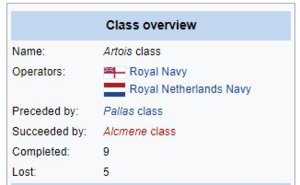
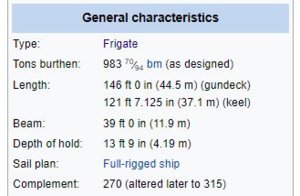
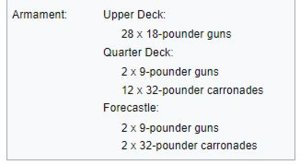
Ships in class

 en.wikipedia.org
en.wikipedia.org
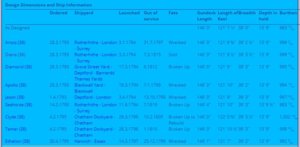
Due to the fact, that Jotika / Caldercraft has an Artois frigate in program, the HMS Diana is maybe the most known ship of this class.
HMS Diana was a 38-gun Artois-class fifth rate frigate of the Royal Navy. She was launched in 1794.
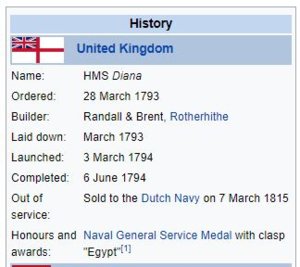
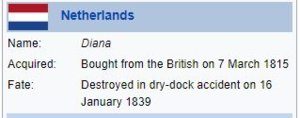
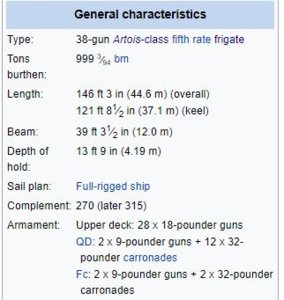
Because Diana served in the Royal Navy's Egyptian campaign between 8 March 1801 and 2 September, her officers and crew qualified for the clasp "Egypt" to the Naval General Service Medal that the Admiralty authorized in 1850 to all surviving claimants.
Diana participated in an attack on a French frigate squadron anchored at Saint-Vaast-la-Hougue at the Action of 15 November 1810, which ultimately led to the destruction of the Elisa. (Boats from Diana went in and set fire to the beached Eliza despite heavy fire from shore batteries and three nearby armed brigs; the British suffered no casualties.)
On 7 March 1815 Diana was sold to the Dutch navy for £36,796. On 27 August 1816 she was one of six Dutch frigates that participated in the bombardment of Algiers.
Fate
Diana was destroyed in a fire on 16 January 1839 while in dry-dock at Willemsoord, Den Helder.

 en.wikipedia.org
en.wikipedia.org
But also the other ships of the class had very interesting histories and careers - take a closer look at the wikipedia page of the class and click through
In the following posts you will find several contemporary drawings of the ships of this class
Seven of these ships were built by contract with commercial builders, while the remaining pair (Tamar and Clyde) were dockyard-built - the latter built using "fir" (pitch pine) instead of the normal oak.
They were armed with a main battery of 28 eighteen-pounder cannon on their upper deck, the main gun deck of a frigate. Besides this battery, they also carried two 9-pounders together with twelve 32-pounder carronades on the quarter deck, and another two 9-pounders together with two 32-pounder carronades on the forecastle.



Ships in class
- HMS Artois
- Builder: John & William Wells, Rotherhithe
- Launched: 3 January 1794
- Completed: 3 March 1794 at Deptford Dockyard
- Fate: Wrecked on the Ballieu rocks off Brittany on 31 July 1797
- HMS Diana
- Builder: Randall & Co, Rotherhithe
- Launched: 3 March 1794
- Completed: 6 June 1794 at Deptford Dockyard
- Fate: Sold to new Dutch Navy on 7 March 1815;
burnt in fire at Willemsoord, Den Helder on 16 January 1839.
- HMS Apollo
- Builder: Perry & Hankey, Blackwall
- Launched: 18 March 1794
- Completed: 23 September 1794 at Woolwich Dockyard
- Fate: Wrecked on the Haak sands off the Dutch coast on 7 January 1799
- HMS Diamond
- Builder: William Barnard, Deptford
- Launched: 17 March 1794
- Completed: 6 June 1794 at Deptford Dockyard
- Fate: Broken up at Sheerness Dockyard in June 1812
- HMS Jason
- Builder: John Dudman, Deptford
- Launched: 3 April 1794
- Completed: 25 July 1794 at Deptford Dockyard
- Fate: Wrecked on rocks off Brittany on 13 October 1798
- HMS Seahorse
- Builder: Marmaduke Stalkart, Rotherhithe
- Launched: 11 June 1794
- Completed: 16 September 1794 at Deptford Dockyard
- Fate: Broken up at Plymouth Dockyard in July 1819
- HMS Tamar
- Builder: Chatham Royal Dockyard
- Launched: 26 March 1796
- Completed: 21 June 1796
- Fate: Broken up in January 1810 at Chatham Dockyard.
- HMS Clyde
- Builder: Chatham Royal Dockyard
- Launched: 26 March 1796
- Completed: 21 June 1796
- Fate: Sold to be broken up August 1814.
- HMS Ethalion
- Builder: Joseph Graham, Harwich
- Launched: 14 March 1797
- Completed: 11 July 1797 at Chatham Dockyard
- Fate: Wrecked on the Penmarcks on 25 December 1799

Artois-class frigate - Wikipedia

Due to the fact, that Jotika / Caldercraft has an Artois frigate in program, the HMS Diana is maybe the most known ship of this class.
HMS Diana was a 38-gun Artois-class fifth rate frigate of the Royal Navy. She was launched in 1794.



Because Diana served in the Royal Navy's Egyptian campaign between 8 March 1801 and 2 September, her officers and crew qualified for the clasp "Egypt" to the Naval General Service Medal that the Admiralty authorized in 1850 to all surviving claimants.
Diana participated in an attack on a French frigate squadron anchored at Saint-Vaast-la-Hougue at the Action of 15 November 1810, which ultimately led to the destruction of the Elisa. (Boats from Diana went in and set fire to the beached Eliza despite heavy fire from shore batteries and three nearby armed brigs; the British suffered no casualties.)
On 7 March 1815 Diana was sold to the Dutch navy for £36,796. On 27 August 1816 she was one of six Dutch frigates that participated in the bombardment of Algiers.
Fate
Diana was destroyed in a fire on 16 January 1839 while in dry-dock at Willemsoord, Den Helder.

HMS Diana (1794) - Wikipedia
British Fifth Rate frigate 'Diana' (1794)
British Fifth Rate frigate 'Diana' (1794). Dates of service, name changes, previous and next incarnations, dimensions, armament, commanders, officers and crewmen, actions, battles, sources
threedecks.org
Dutch Fourth Rate frigate 'Diana' (1815)
Dutch Fourth Rate frigate 'Diana' (1815). Dates of service, name changes, previous and next incarnations, dimensions, armament, commanders, officers and crewmen, actions, battles, sources
threedecks.org
But also the other ships of the class had very interesting histories and careers - take a closer look at the wikipedia page of the class and click through
In the following posts you will find several contemporary drawings of the ships of this class



